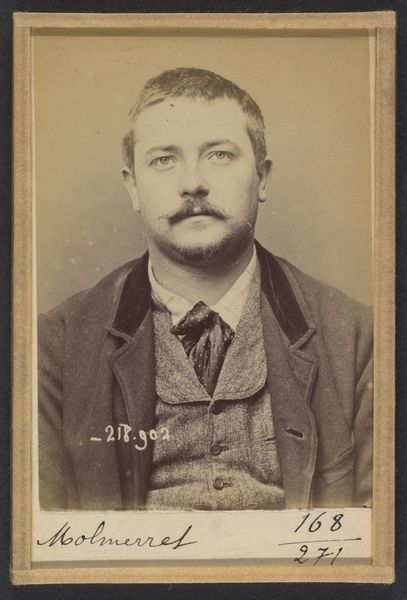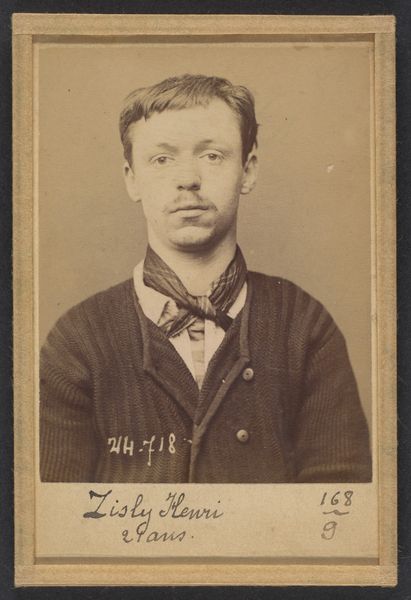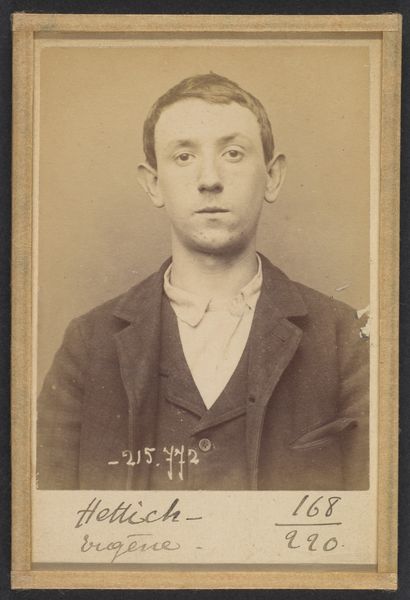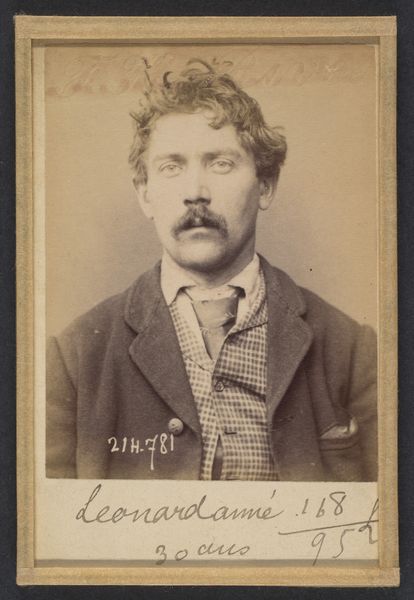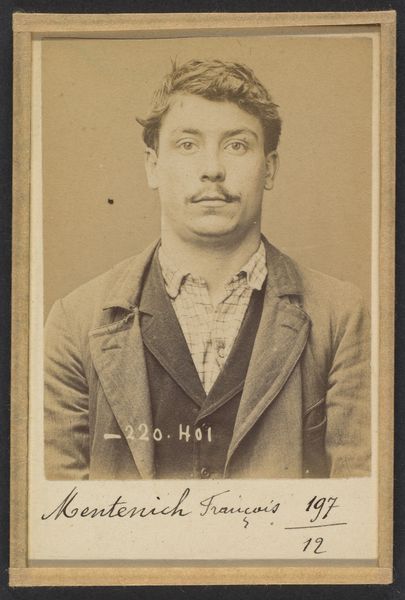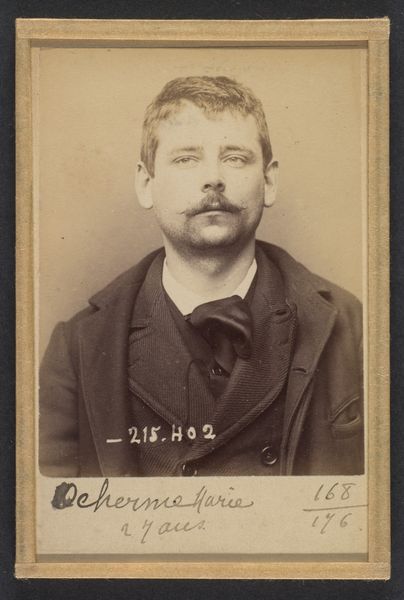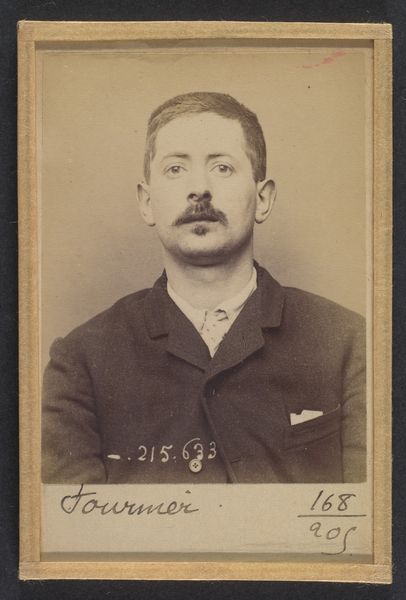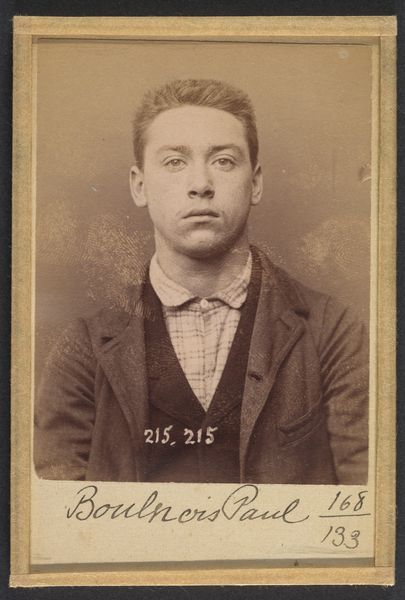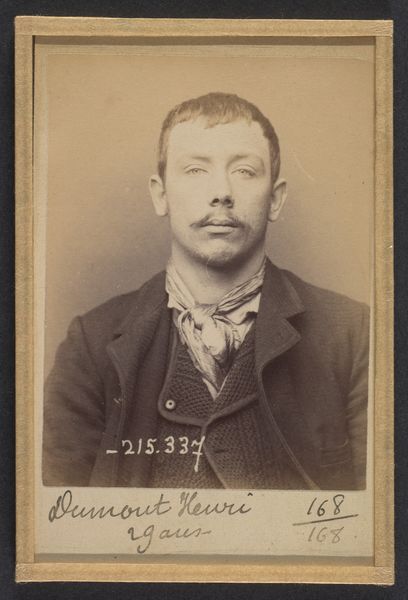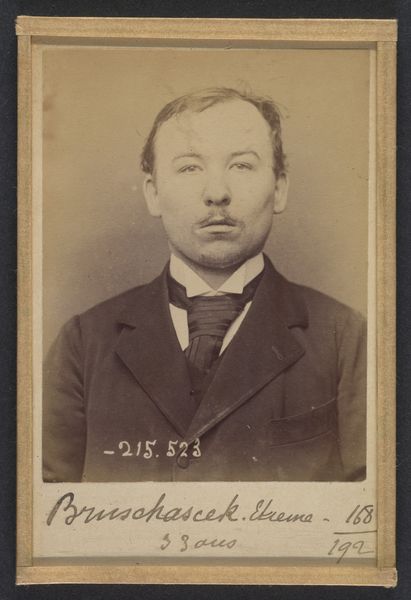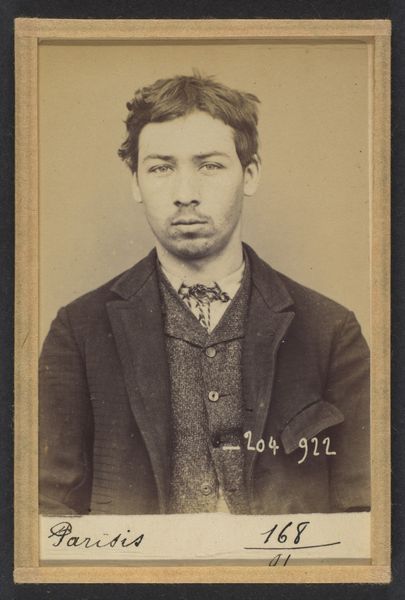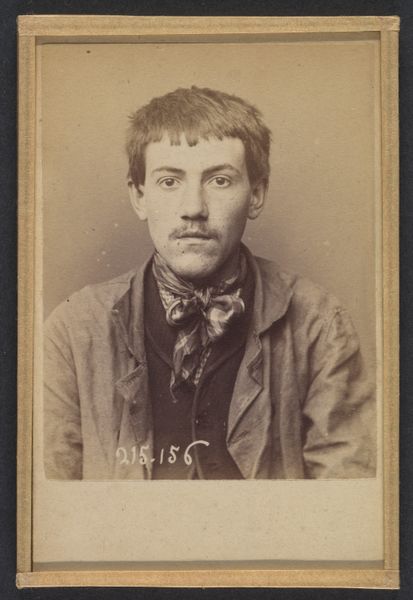
Hostenbock. Joseph, Louis. 22 ans, né à Bruxelles (Belgique). Coiffeur. Anarchiste. 26/2/94. 1894
0:00
0:00
photography, gelatin-silver-print
#
portrait
#
portrait
#
photography
#
gelatin-silver-print
#
men
#
history-painting
#
portrait art
#
poster
Dimensions: 10.5 x 7 x 0.5 cm (4 1/8 x 2 3/4 x 3/16 in.) each
Copyright: Public Domain
Curator: Before us is a gelatin silver print titled "Hostenbock. Joseph, Louis. 22 ans, né à Bruxelles (Belgique). Coiffeur. Anarchiste. 26/2/94," created by Alphonse Bertillon in 1894. It's currently held at the Metropolitan Museum of Art. Editor: My first impression is one of starkness. It feels devoid of artifice, almost brutally direct. The monochrome palette further emphasizes this austere feeling. Curator: Indeed. The limited tonal range—varying shades of brown and cream—lends the piece a somber mood. The composition is meticulously symmetrical; the man’s figure is centered and tightly cropped. His direct gaze commands attention. Editor: The text at the bottom immediately makes me consider context. "Anarchiste," especially—it evokes turn-of-the-century social unrest. He is not just a subject but a signifier of political identity. The information provided about his origins and profession makes it like an antique profile on social media! Curator: Exactly. Bertillon was pioneering the field of forensic science and criminology at the time. It’s crucial to observe the function of this image. It represents a system, a cataloging of individuals deemed threats to the established order. His bow tie, rather foppish, becomes an unsettling affectation against this background. Editor: Absolutely, the symbols clash intriguingly. The act of meticulously recording every detail served the purpose of dehumanizing the individual, reducing him to a set of data points for state control. The handwriting looks like an extension of those ambitions. Curator: The photograph itself becomes a kind of cultural artifact, a testament to the era’s anxieties about social order and deviance. Note how Bertillon achieves maximum clarity, eschewing aesthetic flourishes. The focus is forensic rather than artistic. Editor: Examining this print prompts reflection on power, representation, and the enduring connection between images and social control, even to our own day. Thank you for guiding us on that journey. Curator: The interplay of aesthetics and the stark purpose embedded in the photographic record, leaves an impression on even the most dispassionate observer.
Comments
No comments
Be the first to comment and join the conversation on the ultimate creative platform.
